Do you have a question about the KitchenAid KDTM504EPA and is the answer not in the manual?
Provides critical safety information for operating the dishwasher.
Explains the fundamental working principles of the microfiltration wash system.
Highlights and describes new or advanced features and components of the dishwasher.
Details the location and importance of the model and serial number label.
Indicates where to find the technical service sheet for detailed information.
Explains the meaning of characters in model and serial numbers.
Lists the technical specifications and dimensions of the dishwasher.
Identifies and describes the main parts and features of the dishwasher.
Contains general notes or remarks related to the section.
Guides users through initial setup and quick operational steps.
Provides a concise step-by-step guide for operating the dishwasher.
Details how to properly use the dishwasher for optimal performance.
Explains the various wash cycles and available options.
Describes how the dishwasher communicates its status and progress.
Outlines the various features available on the dishwasher.
Provides instructions for maintaining and cleaning the dishwasher.
Offers solutions for common problems encountered by consumers.
Contains general notes or remarks related to the section.
Outlines critical safety precautions for dishwasher installation.
Details the necessary prerequisites and tools for installation.
Specifies the ideal placement and environmental conditions for installation.
Covers the necessary specifications for connecting the drain hose.
Lists the electrical specifications needed for proper installation.
Provides step-by-step guidance for installing the dishwasher.
Describes how to verify the dishwasher is functioning after installation.
Offers troubleshooting steps if the dishwasher fails to operate post-installation.
Provides supplementary advice and helpful hints for installation.
Instructions for accessing and installing the insulation blanket.
Procedures for removing and replacing the door latch strike.
How to adjust the door spring tension for proper door operation.
Details on accessing and servicing the water inlet and drain hoses.
Information on accessing components related to the Advanced ProDry™ system.
Steps for accessing and servicing the overfill protection assembly.
Instructions for accessing and replacing the interior LED lights.
How to access various components located within the dishwasher door.
Steps to remove and replace the user interface (control panel).
Procedure for removing and replacing the door latch assembly.
Instructions for removing the detergent dispenser assembly.
Identification of components located inside the dishwasher tub.
Details on accessing and removing spray arms, feed tube, and manifold.
Steps to remove the upper, lower, and culinary tool racks.
Procedure for removing and reinstalling the lower spray arm.
Instructions for removing the ProScrub manifold and feed tube.
Steps for removing the diverter disk from the assembly.
Identification of components located underneath the dishwasher tub.
Instructions for removing and replacing the electronic control board.
Steps for accessing and removing the heater assembly.
Procedure for removing the drain pump and sump assembly.
Instructions for removing the optical water indicator.
Steps for removing the diverter assembly.
Identifies parts of the microfiltration wash system.
Instructions for removing the wash motor and rotating inlet filter.
Safety precautions specific to diagnostic and troubleshooting procedures.
Details on how to run the service diagnostic cycle for troubleshooting.
Important notes and tips for using the service diagnostic cycle effectively.
How customer cycles operate and how to advance them.
Explains how to interpret error codes during service diagnostics.
A table listing service error codes, their causes, and what to check.
A guide to help diagnose and resolve common customer issues.
Safety precautions to follow when performing electrical tests.
Provides a schematic of the dishwasher's electrical wiring.
Details about the control board, including specifications and fuse checks.
Explains the electrical operation and power flow within the dishwasher.
Procedure to test incoming and outgoing power to the control board.
Tests the wiring and function of the door switch and latch assembly.
Checks the components and wiring involved in the dishwasher's fill system.
Tests the dispenser solenoid or wax motor and its related circuitry.
Checks the heater element, thermostat, and heating circuit.
Tests the OWI sensor for water presence, temperature, and turbidity.
Checks the diverter motor and its associated wiring and controls.
Tests the diverter sensor/position switch and its connection to the control.
Procedures to test the wash motor and its capacitor.
Tests the drain motor and its electrical connections and resistance.
Checks the lower spray arm motor and its wiring.
Tests the AC fan motor and its circuit.
Tests the interior LED lighting circuit and individual LEDs.
Checks the wiring to the user interface and its functionality.
Contains general notes or remarks related to the section.
Provides critical safety information for operating the dishwasher.
Explains the fundamental working principles of the microfiltration wash system.
Highlights and describes new or advanced features and components of the dishwasher.
Details the location and importance of the model and serial number label.
Indicates where to find the technical service sheet for detailed information.
Explains the meaning of characters in model and serial numbers.
Lists the technical specifications and dimensions of the dishwasher.
Identifies and describes the main parts and features of the dishwasher.
Contains general notes or remarks related to the section.
Guides users through initial setup and quick operational steps.
Provides a concise step-by-step guide for operating the dishwasher.
Details how to properly use the dishwasher for optimal performance.
Explains the various wash cycles and available options.
Describes how the dishwasher communicates its status and progress.
Outlines the various features available on the dishwasher.
Provides instructions for maintaining and cleaning the dishwasher.
Offers solutions for common problems encountered by consumers.
Contains general notes or remarks related to the section.
Outlines critical safety precautions for dishwasher installation.
Details the necessary prerequisites and tools for installation.
Specifies the ideal placement and environmental conditions for installation.
Covers the necessary specifications for connecting the drain hose.
Lists the electrical specifications needed for proper installation.
Provides step-by-step guidance for installing the dishwasher.
Describes how to verify the dishwasher is functioning after installation.
Offers troubleshooting steps if the dishwasher fails to operate post-installation.
Provides supplementary advice and helpful hints for installation.
Instructions for accessing and installing the insulation blanket.
Procedures for removing and replacing the door latch strike.
How to adjust the door spring tension for proper door operation.
Details on accessing and servicing the water inlet and drain hoses.
Information on accessing components related to the Advanced ProDry™ system.
Steps for accessing and servicing the overfill protection assembly.
Instructions for accessing and replacing the interior LED lights.
How to access various components located within the dishwasher door.
Steps to remove and replace the user interface (control panel).
Procedure for removing and replacing the door latch assembly.
Instructions for removing the detergent dispenser assembly.
Identification of components located inside the dishwasher tub.
Details on accessing and removing spray arms, feed tube, and manifold.
Steps to remove the upper, lower, and culinary tool racks.
Procedure for removing and reinstalling the lower spray arm.
Instructions for removing the ProScrub manifold and feed tube.
Steps for removing the diverter disk from the assembly.
Identification of components located underneath the dishwasher tub.
Instructions for removing and replacing the electronic control board.
Steps for accessing and removing the heater assembly.
Procedure for removing the drain pump and sump assembly.
Instructions for removing the optical water indicator.
Steps for removing the diverter assembly.
Identifies parts of the microfiltration wash system.
Instructions for removing the wash motor and rotating inlet filter.
Safety precautions specific to diagnostic and troubleshooting procedures.
Details on how to run the service diagnostic cycle for troubleshooting.
Important notes and tips for using the service diagnostic cycle effectively.
How customer cycles operate and how to advance them.
Explains how to interpret error codes during service diagnostics.
A table listing service error codes, their causes, and what to check.
A guide to help diagnose and resolve common customer issues.
Safety precautions to follow when performing electrical tests.
Provides a schematic of the dishwasher's electrical wiring.
Details about the control board, including specifications and fuse checks.
Explains the electrical operation and power flow within the dishwasher.
Procedure to test incoming and outgoing power to the control board.
Tests the wiring and function of the door switch and latch assembly.
Checks the components and wiring involved in the dishwasher's fill system.
Tests the dispenser solenoid or wax motor and its related circuitry.
Checks the heater element, thermostat, and heating circuit.
Tests the OWI sensor for water presence, temperature, and turbidity.
Checks the diverter motor and its associated wiring and controls.
Tests the diverter sensor/position switch and its connection to the control.
Procedures to test the wash motor and its capacitor.
Tests the drain motor and its electrical connections and resistance.
Checks the lower spray arm motor and its wiring.
Tests the AC fan motor and its circuit.
Tests the interior LED lighting circuit and individual LEDs.
Checks the wiring to the user interface and its functionality.
Contains general notes or remarks related to the section.
| Style | built-in dishwashers |
|---|---|
| Color | custom panel ready, custom |
| Load Capacity | 16 |
| Number of Cycles | 6 |
| Cycle Selections | express wash, light/china, normal, prowash, rinse only, tough |
| Options/Settings | 4 hour delay, control lock, hi temp wash, prodry, proscrub, sani rinse, top rack wash |
| Drying Type | heated drying |
| Noise level | 44 decibels adjusted |
| Control Type | touchpad |
| Delay Start | yes |
| Child Lock | yes |
| Load Sensor | yes |
| Number of Racks | 3 |
| Cycle Signal | no |
| Water Filter | yes |
| Water Softener | no |
| Food Disposer | no |
| Sanitize Settings | yes |
| Annual Energy Consumption | 270 kilowatt hours |
| Water Consumption Per Cycle | 7.9 gallons |
| Voltage | 120 volts |
| Current | 20 amperes |
| Depth | 23 13/16 inches |
|---|---|
| Height | 34 1/2 inches |
| Width | 23 7/8 inches |
| Net Weight | 113 pounds |
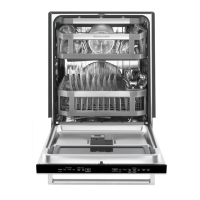
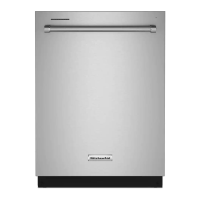
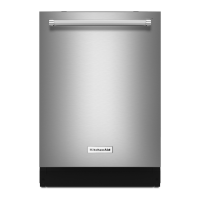




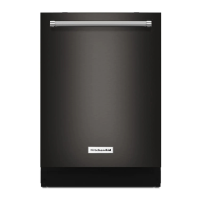
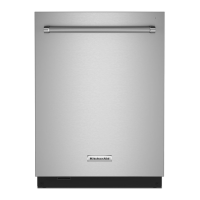
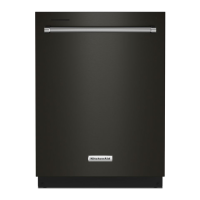
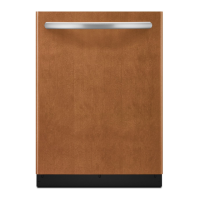
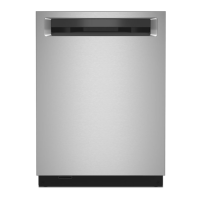
